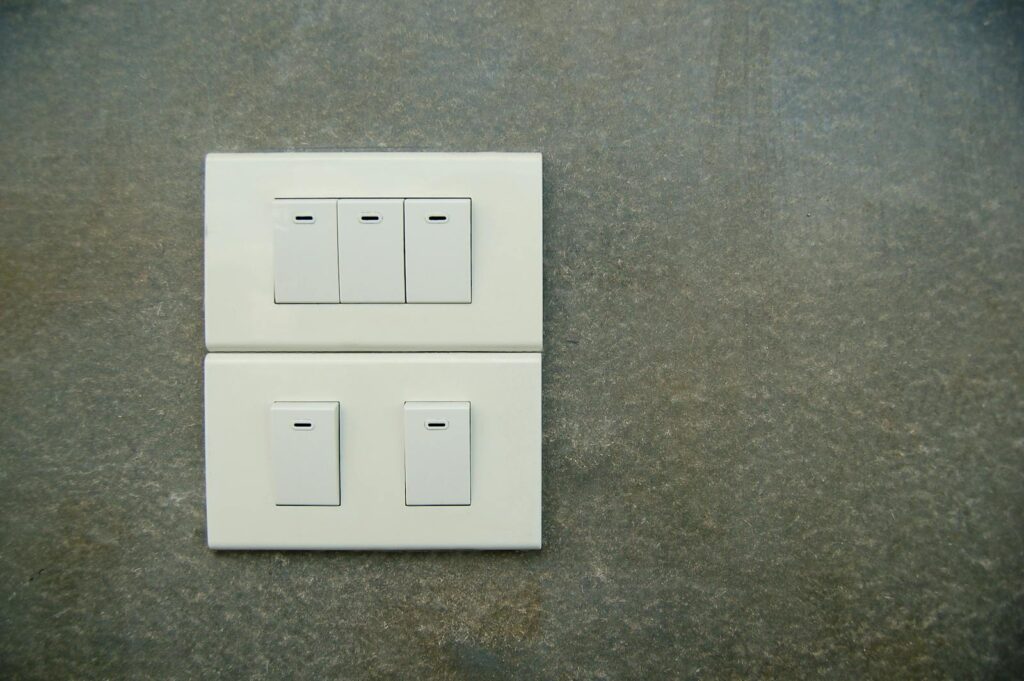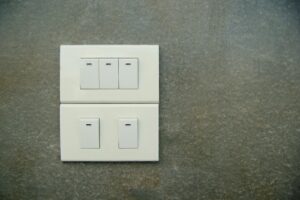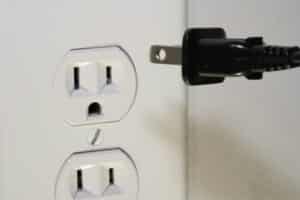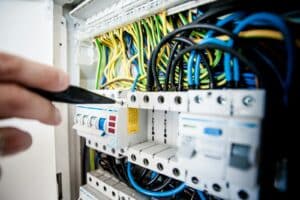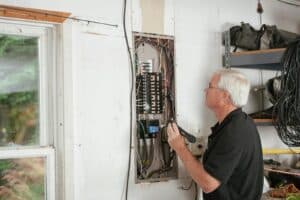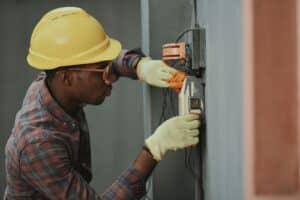Improve Energy Efficiency in Your Home’s Electrical System by upgrading to LED lighting, optimising appliance use, and ensuring your wiring supports modern demands. These changes reduce power consumption, lower utility bills, and minimise your environmental footprint.
1. Convert to LED Lighting
Replace old incandescent or halogen bulbs with energy-efficient LED alternatives. LEDs use significantly less power, last longer, and generate less heat, reducing both lighting and cooling costs. Choose appropriate colour temperature for each room.
2. Optimise Appliance Usage
Unplug chargers and appliances when not in use to eliminate “phantom load.” Use energy-saving modes on white goods and run dishwashers/washing machines with full loads during off-peak hours if you have time-of-use tariffs. Group by circuit for smarter control.
3. Install Smart Home Controls
Integrate smart switches, dimmers, and thermostats to automate lighting and climate control. Schedule devices to turn off when not needed, and use occupancy sensors to avoid wasted energy. Monitor usage in an app to identify further savings.
4. Upgrade Old Appliances
Replace inefficient older appliances with new, energy-star rated models. While an upfront cost, the long-term savings on electricity bills can be substantial. Prioritise fridges, air conditioning, and hot water systems for fastest ROI.
5. Conduct an Energy Audit
Have a licensed electrician perform a comprehensive energy audit to identify major power drains and recommend targeted upgrades. This may include power factor correction, insulation assessments, or optimising heating and cooling zones. Use the audit results to compare energy provider options and ensure your business is on the most cost-effective plan. Revisit the audit annually to track improvements and adjust your energy strategy accordingly.
Pro Tip
To improve energy efficiency in your home’s electrical system, consider installing a solar PV system. This generates your own clean electricity, significantly reducing reliance on grid power and lowering bills.

